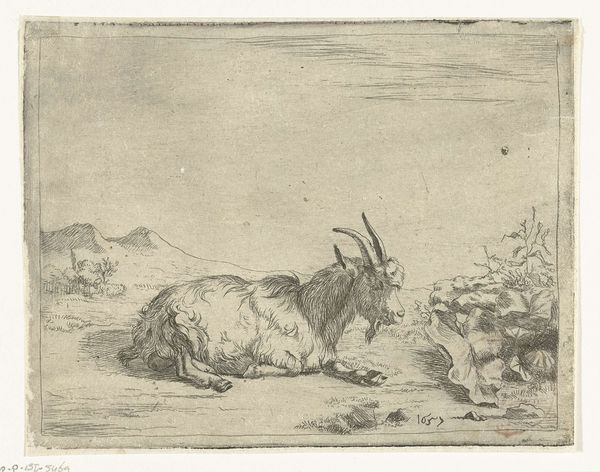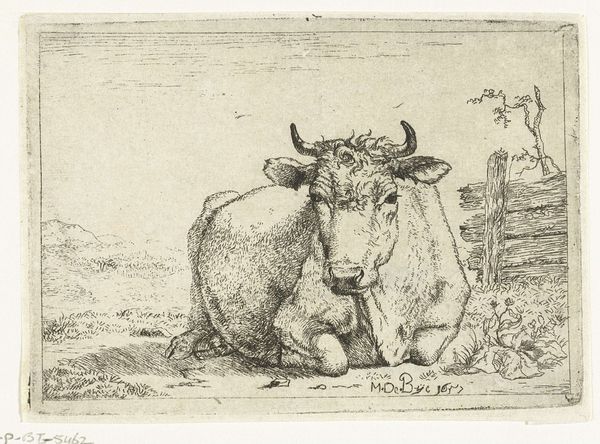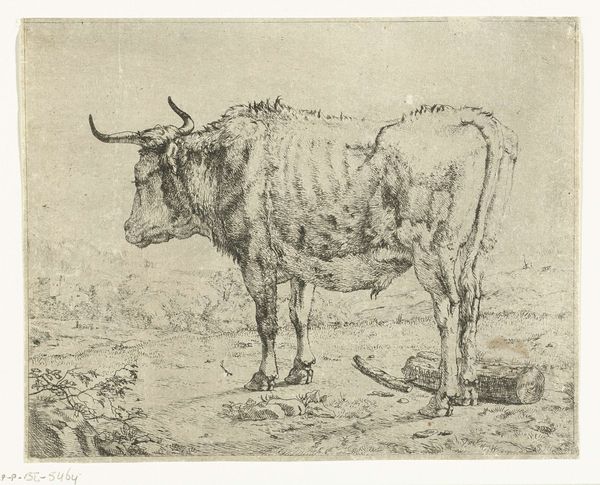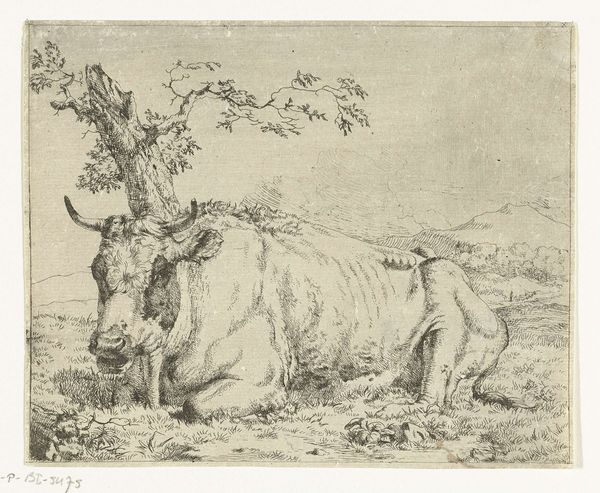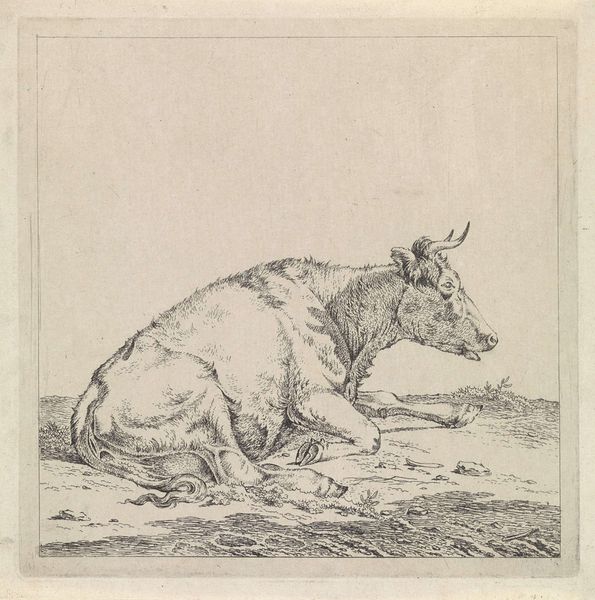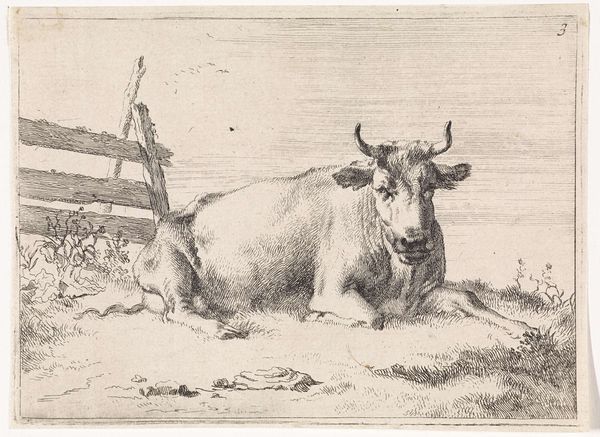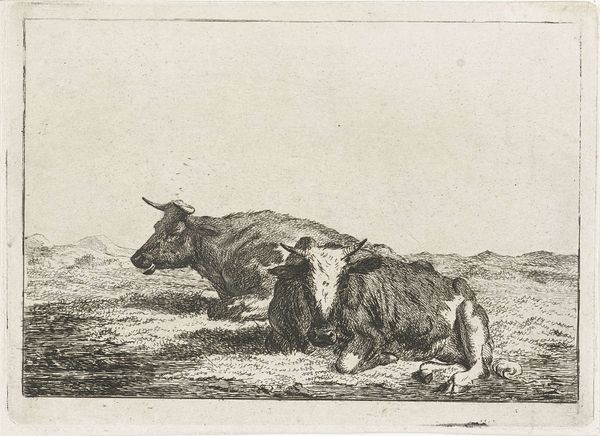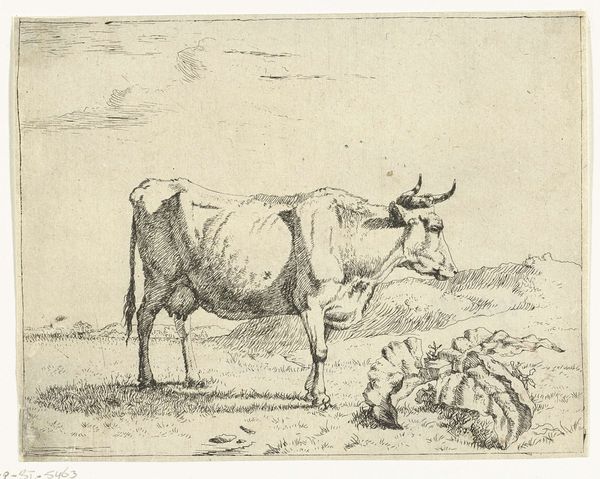
drawing, print, etching, graphite, pen
#
drawing
#
animal
#
dutch-golden-age
# print
#
pen sketch
#
etching
#
pencil sketch
#
landscape
#
graphite
#
pen
#
genre-painting
#
realism
Dimensions: height 115 mm, width 150 mm
Copyright: Rijks Museum: Open Domain
Curator: This etching, "Rustende koe met halster," or "Resting Cow with Halter," by Marcus de Bye, dating from around 1657 to 1688, presents a rather subdued bovine form. Editor: The mood is incredibly melancholic. The textures conveyed through the etching are evocative—I immediately note the stark contrast of the animal's coarse hair against what appears to be rather sparse landscape around it. Curator: Yes, and observe how de Bye employs a complex system of lines to build form and shadow, a classic demonstration of Baroque visual language. The composition—centering the cow almost symmetrically—encourages contemplation. The lines almost vibrate with controlled energy. Editor: Agreed. What I find particularly striking is how the etching highlights the labor inherent in animal husbandry during the Dutch Golden Age. The halter isn’t just an aesthetic detail; it speaks volumes about the animal's role and its constrained existence as property, perhaps its transportation as it waited to become consumed. The choice of etching allows for replication, distribution, a circulation that extends far beyond any singular pastoral scene. Curator: Certainly, but let's also consider how the reductive palette serves the animal's form, how de Bye sculpts mass with pure value, pushing form and shadow to do the labor. Editor: Indeed. Considering the period and materials, its mass-production is a detail often overlooked, a function that shifts our focus from singular "art object" to broader socio-economic narratives around sustenance, wealth, and pastoral mythologies. Curator: Both points of view add depth, wouldn’t you agree? Viewing it formally, we are aware of composition, the movement, whereas the material view brings in how the landscape changed because of dairy or agricultural production. Editor: Absolutely, seeing this cow here really asks me to consider everything it represents as it rests quietly under constraint. Curator: Agreed, there are so many considerations to ruminate on while observing de Bye’s cow in rest.
Comments
No comments
Be the first to comment and join the conversation on the ultimate creative platform.

